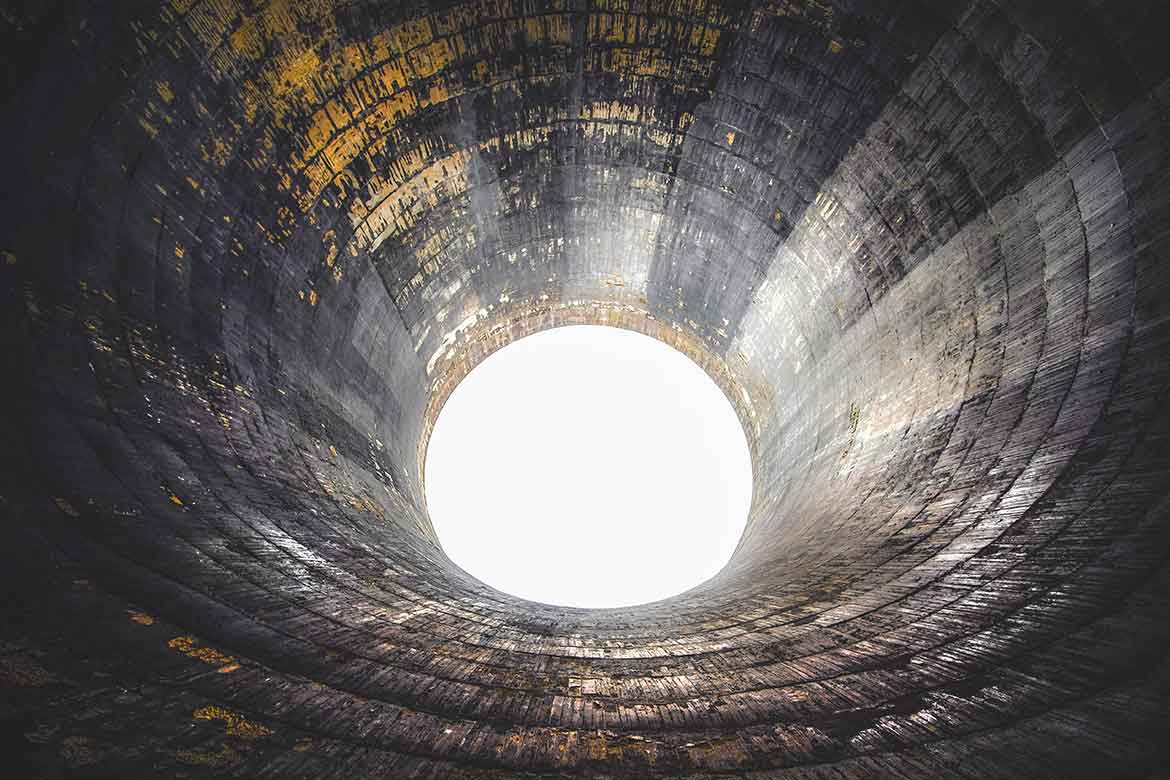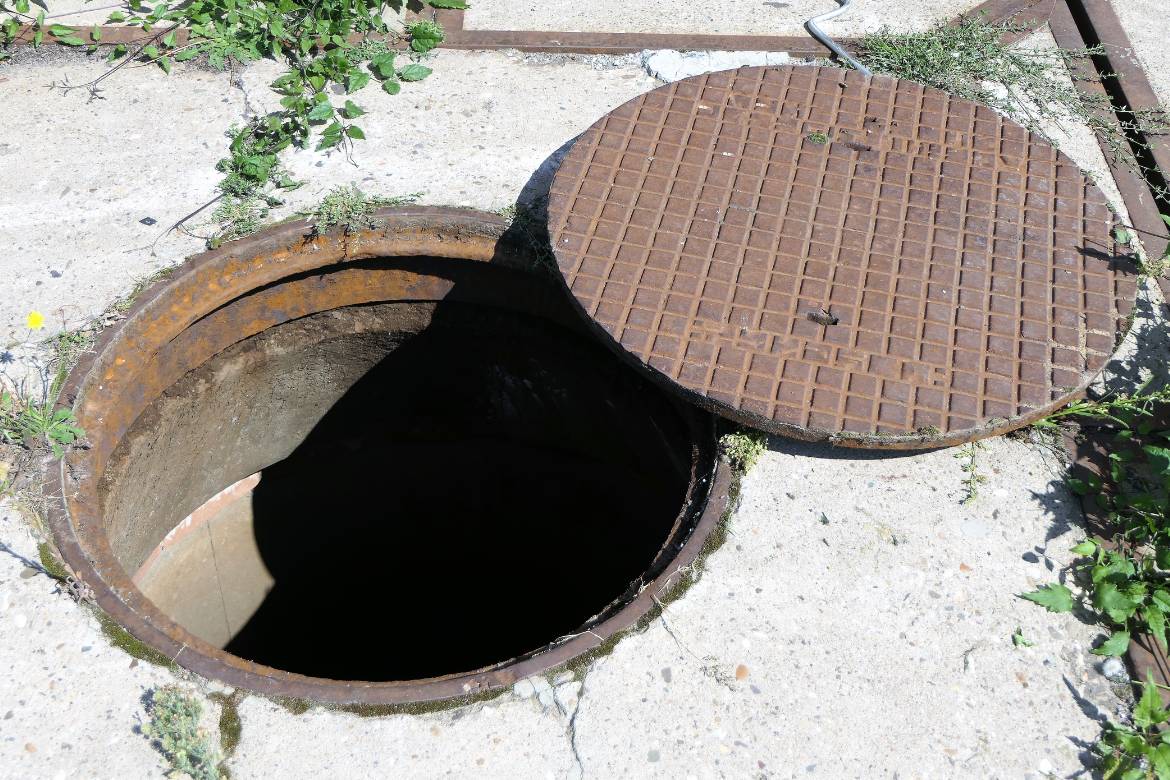8th August, 2023
The Definition Of A Confined Space And 20 Examples
A confined space is any enclosed place with limited access, and so is a higher-risk environment to work in. Confined spaces can be above or below ground, fully or partially enclosed. In this blog post, we explain confined spaces, with definitions and examples.

Every year, people die and are seriously injured in confined spaces. We recently wrote about what makes confined spaces dangerous places. But what if you don't know you are in a confined space until it's too late? It is not always obvious when you are working in a confined space.
In this blog post, we are taking it back to basics and looking at what a confined space is, with definitions and examples.
Confined space definition
In simple terms, a confined space is any enclosed place with limited access. Because confined spaces are enclosed they have increased risks.
- You might become trapped
- It might flood
- It could contain hazardous substances
- There might not be enough oxygen
- It might fill with a hazardous gas
- The air inside might be toxic
- There might be a fire or explosion
- You might not be able to escape in an emergency
- Other people might not be able to see if you get into difficulties
- You might not be able to communicate for help
- Other people might not be able to get in and rescue you
Confined spaces can be above or below ground. They also don't need to be entirely enclosed. A confined space might only be partially enclosed, but enclosed enough that means risk is increased.
The definition of a confined space can vary slightly depending on where you look, but it all boils down to the same thing - an enclosed place with increased risks.
Where better to look for an official definition of a confined space than the confined space regulations themselves:
“confined space” means any place, including any chamber, tank, vat, silo, pit, trench, pipe, sewer, flue, well or other similar space in which, by virtue of its enclosed nature, there arises a reasonably foreseeable specified risk;
So the official definition of a confined space is any place which, because of its enclosed nature, there is a reasonably foreseeable risk.
The definition also includes a few helpful examples, like chambers, tanks, vats, silos and pits. We will expand on a few more examples shortly.

The HSE website also includes a useful definition, which means the same thing but uses slightly different wording:
A confined space is a place which is substantially enclosed (though not always entirely), and where serious injury can occur from hazardous substances or conditions within the space or nearby (e.g. lack of oxygen).
If we are looking for a confined space then, we are looking for:
- a place that is enclosed (not always entirely)
- has restricted access
- has increased risk
Increased risks in confined spaces can be because of restricted access and exit. It might be difficult to get in and out. This increases risks because, if something was to happen, it will be hard for you to escape.
Restricted access will also mean it is difficult for someone to rescue you. People outside the confined space might not be able to see those inside. This makes it difficult to communicate when you need help, or if problems occur.
Access and communication aren't the only hazards in confined spaces. Because the space is enclosed, there can be ventilation issues too.
Hazardous substances can get trapped in a confined space and cause the atmosphere to become unsafe.
There may not be enough oxygen present in the space to start with. Or, if oxygen gets used up through breathing or other activities within the confined space, there may not be enough ventilation to provide fresh oxygen when needed.
Confined spaces can also quickly flood with water or other materials. And if this blocks the escape, you may be trapped, crushed or drowned.
Find out more about the hazards in confined spaces in our blog post 7 hazards that make confined spaces dangerous places.
Examples of confined spaces
Confined spaces are not usually intended for occupancy by people, but during maintenance work or other activities, entry into the space may be required. A confined space permit to work will often be used to control entry, due to the high-risk nature of the work, and the hazards it can present.
Now we know what a confined space is, maybe you have come up with some examples yourself. Perhaps you've needed to work in a confined space in your workplace or a recent project.
Not all confined spaces are obvious, so here are 20 examples of confined spaces (with explanations below) to help you spot them:
- Manholes
- Sewers
- Storage tanks and vats
- Excavations
- Trenches
- Pits
- Tunnels
- Lift and access shafts
- Ducts
- Pipes
- Chambers
- Silos
- Flues
- Boilers
- Vaults
- Hoppers
- Wells
- Cargo holds in ships
- Unventilated areas and rooms in buildings
- Vessels and voids

1. Manholes
A manhole (utility hole, maintenance hole, or sewer hole) is an opening to a confined space but is also a confined space itself. Once you enter a manhole, you are in a confined space.
2. Sewers
These underground pipes and tunnel systems carry drainage water and waste matter. Access is restricted usually through a manhole (see above), and they are enclosed - meeting our definition of a confined space.
In 2019, Thames Water was fined £300k under the Confined Spaces Regulations after three workers nearly drowned in a sewer.
3. Storage tanks and vats
These containers are used to hold liquids and gases. Any kind of tank or container you need to enter is likely to be a confined space, whether above or below ground.
4. Excavations
Excavations are often dug for temporary access or construction below ground, and you will find them on most construction sites during groundwork activities. They may only be partially enclosed, but ladder access is usually restricted, and excavations can quickly flood or collapse.
5. Trenches
Similar to excavations above, trenches are usually dug for short-term work, but can often be enclosed and form confined spaces with restricted access.
6. Pits
A pit is a hole, shaft, or cavity in the ground. Pits can be found in many different workplaces - examples include:
- vehicle inspection pits
- industrial pits
- mining pits
7. Tunnels
Tunnels are underground passageways. Tunnels will often spring to mind when thinking of a confined space.
8. Lift and access shafts
This is a vertical shaft that often extends below ground, but even entering a lift shaft at the floors above ground level will still be a confined space due to it being enclosed with restricted access.

9. Ducts
Ducts, conduits, passages and pipe systems are used in heating, ventilation, and air conditioning. Access for servicing or maintenance is confined space work.
10. Pipes
Pipes move liquids and gases from one area to another, both vertically and horizontally (often at a gradient). If a pipe becomes flooded with liquid or toxic gas a confined space worker may not be able to escape.
11. Chambers
Chambers may be fully or partially enclosed and sealed, but can often be confined spaces.
12. Silos
Like tanks and containers, these are fully or partially enclosed structures for storage. Silos are used to store bulk (often loose) materials like grain, which are fine and move like liquid.
If a person becomes submerged in grain they often cannot escape without assistance and can be buried or engulfed - this is often fatal.
13. Flues
Flues are found at the end of ducts, pipes, or openings.

14. Boilers
Boilers and boiler rooms, usually in larger industrial applications can be confined spaces where entry is required.
15. Vaults
Vaults are underground or enclosed storage areas accessed by a maintenance hole.
16. Hoppers
A hopper is a storage container and dispenser via a chute. It is similar to a silo and carries similar risks.
17. Wells
A well is a vertical excavation or structure, e.g. a water well. There is usually only one way in and out.
18. Cargo holds in ships
Cargo holds are enclosed with restricted access by a large hatch at the top. Even smaller boats will have confined spaces that may need to be accessed occasionally for maintenance or repairs, creating increased risks that need to be managed.
Prosecution followed an accident to two employees who were burnt when flammable solvent fumes were ignited by an electric sander whilst removing paint from inside a confined space in a small yacht under repair.
19. Unventilated areas and rooms in buildings
Can a room be a confined space? Not usually, but in some circumstances, particularly below ground level - but can be found on any floor.
20. Vessels and voids
These are confined spaces that may need to be occasionally accessed for maintenance, repairs and during construction.
Remember, confined spaces are dangerous places.
If you need help preparing your safe systems of work, we have health and safety documents to help you. Download the confined space risk assessment template to plan the work, the confined space permit to work to control the work, and the confined space toolbox talk to raise awareness.
This article was written by Emma at HASpod. Emma has over 10 years experience in health and safety and BSc (Hons) Construction Management. She is NEBOSH qualified and Tech IOSH.
Better health and safety...
We are here to help you and your business put safety in everything.
Learn MoreRecent posts like this...

HSE Fee For Intervention Charges Explained
FFI stands for 'fee for intervention', which was introduced under the Health and Safety (Fees) Regulations 2012. FFI aims to recover the HSE's costs, including inspection, investigation and enforcement action, charging businesses that are in breach of health and safety regulations.
Read Post
How To Plan For Better Health And Safety At Work
If you want better health and safety, you need to plan for it. And who doesn't want to stay safer and have fewer accidents and ill health in their workplace? In this blog post, we look at how to plan for better health and safety at work.
Read Post
No Injuries, No Health And Safety Problems!?
It's been over a year since the last injury in your workplace. But just because you haven't had any accidents doesn't mean you are safe or that your health and safety performance is good. Your accident reporting system might just be hiding the truth. No injuries, no problems!? Don't count on it.
Read Post